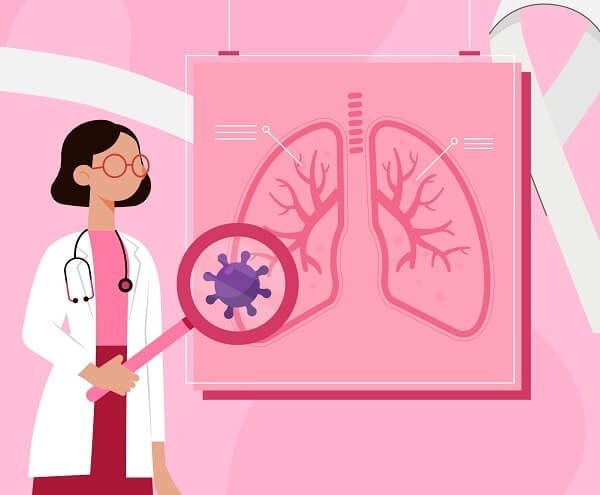What Are the 7 Most Common Lung Diseases?
Lung diseases affect millions of people worldwide and can significantly impact daily life. Knowing the most common lung diseases, their symptoms, and treatment options can help you manage these conditions effectively. Here’s a simple guide to the seven most common lung diseases.
1. Asthma
Asthma is a chronic condition where your airways become inflamed and narrow, making it hard to breathe. It can be triggered by allergies, exercise, cold air, or stress.
Symptoms:
- Wheezing
- Shortness of breath
- Chest tightness
- Coughing, especially at night or early morning
Treatment:
- Inhalers (both daily and emergency)
- Medications to reduce inflammation
- Avoiding triggers
2. Chronic Obstructive Pulmonary Disease (COPD)
COPD includes diseases like chronic bronchitis and emphysema, mainly caused by smoking or long-term exposure to harmful substances. It gradually makes it harder to breathe.
Symptoms:
- Persistent cough
- Shortness of breath, especially during physical activities
- Wheezing
- Chest tightness
- Frequent respiratory infections
Treatment:
- Inhalers to open airways
- Medications to reduce inflammation
- Pulmonary rehabilitation
- Oxygen therapy in advanced cases
3. Pneumonia
Pneumonia is an infection that inflames the air sacs in one or both lungs, causing them to fill with fluid or pus.
Symptoms:
- Chest pain when breathing or coughing
- Cough with phlegm
- Fever, chills, and sweating
- Shortness of breath
- Fatigue
Treatment:
- Antibiotics for bacterial pneumonia
- Antiviral medications for viral pneumonia
- Rest and fluids
- Hospitalization in severe cases
4. Lung Cancer
Lung cancer is a serious disease often linked to smoking, though non-smokers can get it too. There are two main types: non-small cell lung cancer (NSCLC) and small cell lung cancer (SCLC).
Symptoms:
- Persistent cough
- Coughing up blood
- Shortness of breath
- Chest pain
- Unexplained weight loss
Treatment:
- Surgery to remove cancer
- Radiation therapy
- Chemotherapy
- Targeted therapy
- Immunotherapy
5. Interstitial Lung Disease
Also called as ILD, involves scarring and inflammation around the air sacs, making it hard to breathe. Leads to dry cough. It can result from chronic inflammation, infections, or environmental exposures, autoimmune conditions or also on its own without any cause.
Symptoms:
- long standing and progressing Shortness of breath, especially during or after physical activity
- Dry, persistent cough
- Fatigue
- Unexplained weight loss
- Aching muscles and joints
Treatment:
- Medications to slow disease progression
- Oxygen therapy
- Pulmonary rehabilitation
- Lung transplant in severe cases
6. Bronchiectasis
Involves the irreversible abnormal dilatation of the airways causing a vicious cycle of phlegm to get settled in airways and recurrent respiratory infection.
Symptoms:
- cough with copious expectoration,
- postural dependant,
- with or without breathlessness.
- Duration of onset can be since childhood in cases of congenital disorder or after a lung infection.
Treatment:
- postural drainage is the mainstay of treatment using mucus clearing devices.
- With antibiotics during infection.
- Inhalers and mucus thinning devices are also given.
7. Tuberculosis (TB)
Tuberculosis is a contagious bacterial infection that mainly affects the lungs but can spread to other parts of the body.
Symptoms:
- Persistent cough lasting more than three weeks
- Coughing up blood
- Chest pain when breathing or coughing
- Unintentional weight loss
- Fatigue
- Fever and night sweats
Treatment:
- A long course of antibiotics (usually 6-9 months)
- Directly observed therapy to ensure adherence to the treatment
Conclusion
Recognizing the symptoms of these common lung diseases and seeking early treatment can significantly improve your quality of life. If you experience persistent breathing problems, consult a pulmonologist near you. Early diagnosis and treatment are key to managing these conditions effectively.
